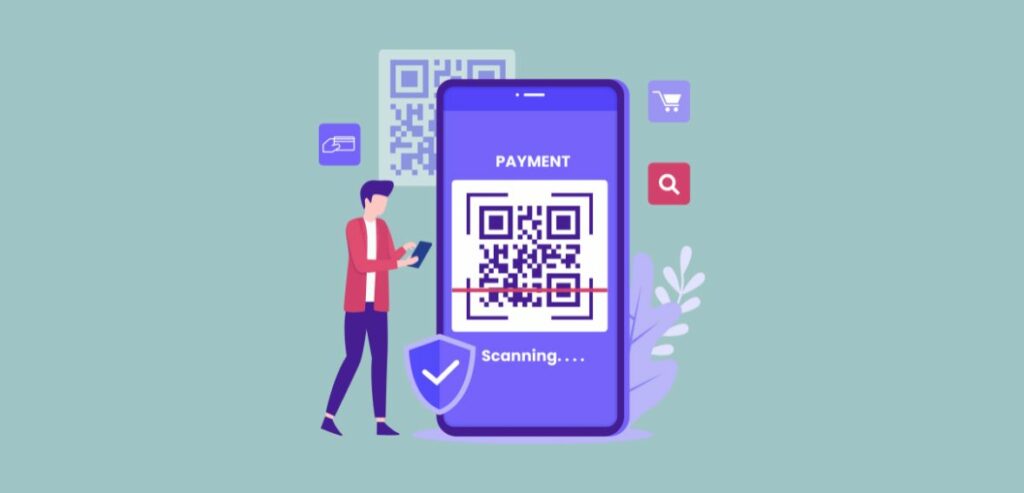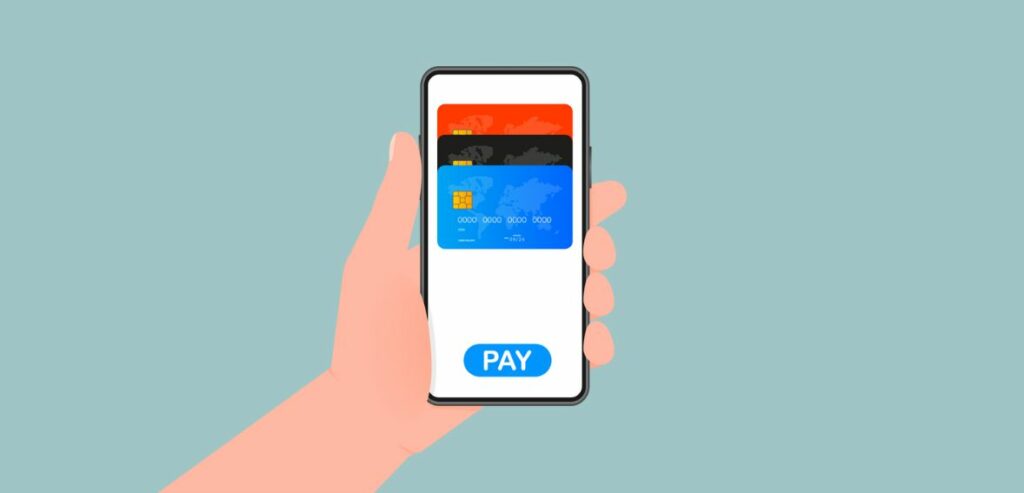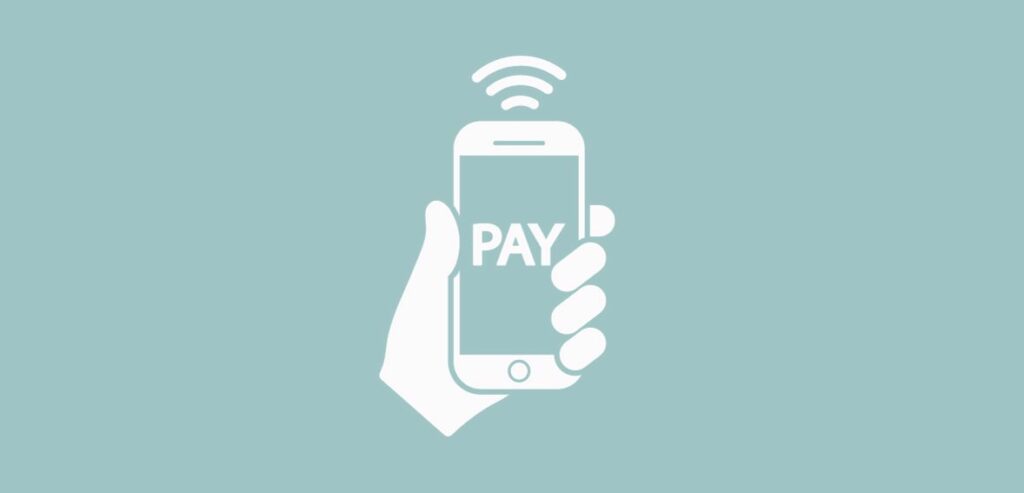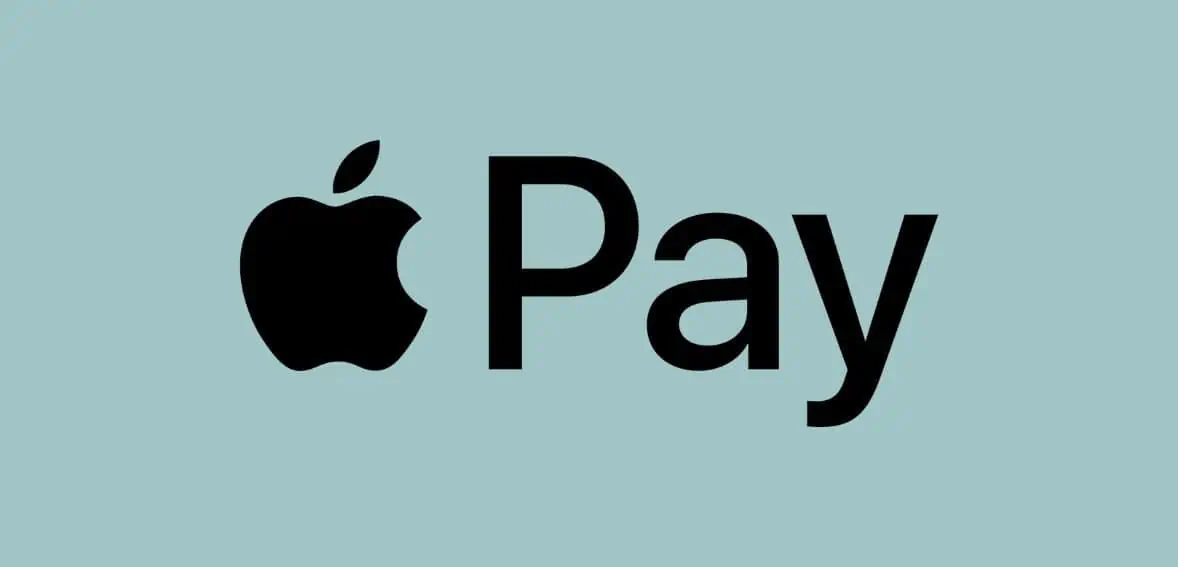Whether you operate a single store or run an organization with multiple branches, offering customers secure payment options that are easy to use and can be traced easily when auditing is crucial, Apple Pay is one of the most popular mobile payment methods in 2024 that many customers prefer due to its reliability, convenience, and speed when conducting transactions using iPhones, Apple Watches, and iPads.
As of September 2023, Apple Pay has 507 million users, accounting for around 9% of all mobile wallet users. With over 85% acceptance among retailers in the United States, this digital wallet has become a favored choice for online transactions.
If your business doesn’t support Apple Pay as a payment option, you could miss out on sales opportunities. The good news is that incorporating Apple Pay into your payment options is relatively straightforward. Getting started with Apple Pay is simple – just choose a payment processor, obtain an NFC card reader, enable the Tap to Pay feature on iPhone devices, integrate an Apple Pay button into your checkout process, and inform your customers about this available mobile payment service.
In this comprehensive article, we will go in-depth, providing you the guidance about how to accept Apple Pay in your business operations.
Basics Of Apple Pay
Introduced by Apple Inc. in 2014, Apple Pay has completely transformed how people shop at shops, both online and offline. This remarkable service allows users to make purchases effortlessly using cutting-edge near-field communication (NFC) technology. Whether you’re shopping in-person through iOS apps or making purchases online, Apple Pay is the secure and convenient solution for all your payment needs.
Apple Pay aims to provide an alternative to debit and credit cards, such as chip and PIN cards or magnetic stripe cards. It’s widely supported by debit and credit card providers. To take advantage of this service, users simply need to upload their payment information to Apple Wallet and go through a verification process with their card issuer.
Once your payment information is uploaded, all the relevant details are securely linked to the app, eliminating the need to handle cards during in-person transactions. You can enjoy the modernized payment experience of Apple Pay on various devices, including iPhone 6 or later models, Apple Watch, MacBook, and iPads.
How Does Apple Pay Work?

Think of it like those contactless payments by card you’re used to at stores. Once you’ve linked your credit or debit card to your wallet, making a payment is a breeze. Simply bring your device close to the payment terminal. NFC technology does its magic by connecting your phone with the terminal.
Confirming the payment is as easy as entering your passcode or using biometrics (face or fingerprint). The best part? Apple Pay removes the spending limit with contactless payments, providing an unrestricted payment experience faster than using your card!
When deciding which card to use, you can choose each time by accessing your wallet or pre-set a card for every transaction for added convenience. Whether you’re using an iPhone, iPad, MacBook, or Apple Watch, NFC technology plays an important role in processing the payment. This technology allows for communication between two devices through radio fields.
Rest assured that the proximity requirement ensures you won’t accidentally end up paying someone’s bill!
Additionally, your card number is never stored on your device or Apple servers, and your information remains undisclosed to merchants during transactions. This built-in safety feature makes Apple Pay a worry-free option for making payments.
How Can You Accept Apple Pay Payments At Your Store?

Starting with Apple Pay is a breeze; here is a simple guide that will help you through each step in detail:
Choose a Payment Processor That Accepts Apple Pay:
To start accepting Apple Pay, the initial step is to sign up for a merchant account with a payment processor. Most known payment processors seamlessly handle Apple Pay transactions at the same rates as regular credit card transactions.
It’s important to understand that a payment processor plays a role in ensuring credit card transactions, whether you have a physical store or an online business. They act as the middleman between the customer’s credit card issuer, their bank, and your business. The payment processor verifies and facilitates fund transfers.
If you have any doubts or concerns, it’s wise to communicate with an expert. This approach can help avoid obstacles when processing Apple Pay transactions and ensure a hassle-free integration into your payment system. Here are some suggestions that Apple also recommends:
- ACI Worldwide
- Authorize.net
- Adyen
- Braintree
- CellPoint
- Checkout.com
- Chase
- FIS
- Fiserv
- Global Payments
- MerchantE
- Payway
- Nuvei
- Stripe
- Square
- Worldpay
- WorldNet
Acquire a Compatible Terminal:
To start accepting Apple Pay, you’ll need a payment reader next. This device should be compatible with Apple Pay, which uses NFC technology. You can find these readers from sources like banks, credit card processors, and third-party point-of-sale (POS) system providers.
Before purchasing, you must check with your provider to see if they offer Apple Pay terminals. This will ensure an integration with your existing setup.
On the other hand, if you have an eCommerce store, you have a couple of straightforward options to integrate Apple Pay with your store. The simplest route involves using an eCommerce platform that supports Apple Pay, like
- Amazon Payment Services,
- GoDaddy,
- BigCommerce,
- Maropost Commerce Cloud,
- IBM,
- Salesforce,
- Miva,
- MONIE,
- Squarespace,
- Shopify,
- WooCommerce,
- Wix.
Each platform provides different instructions for integrating Apple Pay, so it’s recommended to refer to their respective documentation for guidance. If you have some technical expertise, incorporate a JavaScript API or Apple Pay SDK kit into your website. However, this may be more suitable for developers familiar with the backend.
When customers are ready to make transactions, they will be informed about the availability of the “Apple Pay as a Payment Option” button. By clicking this button, they will be prompted to authenticate their purchase using either Touch ID, passcode, or Face ID. This ensures a seamless payment process.
Set Up NFC-Compatible Hardware
Just like other contactless payments, Apple Pay relies on NFC technology. This technology allows communication between two systems when they are close. So, it’s important to have a card reader that has NFC technology.
Most card readers already come equipped with NFC. But still, it’s good to inquire before purchasing. And make sure your card reader supports tap payments. If you’re unsure, you can check the specifications – look for the wireless symbol on the reader.
Setting up your card reader is a relatively simple process. Although the instructions may vary depending on the app or POS system you’re using, the basic steps remain the same. Before pairing your hardware, ensure that your software or app is updated to the latest version.
Promote Your Acceptance of Apple Pay
To ensure your Apple Pay integration reaches your customers, include this information across all your marketing materials. Whether it’s online or physical, make it a point to highlight the convenience of using Apple Pay at your business.
Additionally, consider displaying clear and interesting signs like ‘Pay with Apple Pay’ or Apple Pay is Accepted Here’ at your POS. This simple visual cue is a straightforward invitation for customers to use Apple Pay for hassle-free transactions. This not only builds trust but also encourages Apple users to choose your business for their purchases. Remember, a straightforward promotional approach is key to maximizing the benefits of Apple Pay integration.
What Are The Benefits Of Integrating Apple Pay With Your Business?

There are literally tons of benefits to Accepting Apple Pay in your store. Here are some:
- Improved Security with Apple Pay
Nowadays, security is a top concern as news of hacking and credit card data theft continues to circulate annually. Hackers pose a significant challenge for consumers and retailers, highlighting the need for individuals to protect their information and finances. Apple Pay provides a reliable solution, offering enhanced security compared to traditional credit cards.
Traditional credit card technology, storing bank information on the magnetic strip, is considered outdated and vulnerable to hackers. Card skimmers make it easy for information to be stolen directly from the card.
There remains a risk despite the introduction of chip cards. This situation forces chip card owners to swipe their cards, exposing their information to potential risks. Apple Pay, however, put concerns about risking consumer information out of the picture. Apple Pay employs an advanced security technology known as tokenization. This means that Apple Pay is exceptionally difficult to hack, ensuring a high level of security for your transactions.
- Efficiency with Apple Pay
Apple Pay offers a swift purchasing experience, allowing customers to make transactions with a quick tap on their device after verifying their identity. The entire process typically takes seconds.
In contrast, using a credit or debit card can be time-consuming. Customers must locate the card in their wallet, swipe it (or enter all the details online), and complete the transaction by entering their PIN or signing the receipt.
Similarly, cash payments involve counting, adding extra time for both the customer and the employee. Apple Pay stands out as a faster alternative to these traditional payment methods, significantly reducing the time your customers spend waiting in line.
- Competitive Advantage
Maintaining a competitive edge is crucial for your business, and competition significantly influences your decision-making and marketing strategies. Integrating Apple Pay into your business plan is a practical way to stay competitive.
Your competitors fall into two categories – those who are providing Apple Pay as a payment option and those who haven’t. By adding Apple Pay to your services, you not only compete with businesses that already offer it but also surpass those that don’t accept it.
Customers who prefer using Apple Pay tend to remain loyal to businesses that support it. By providing this payment option, your business stands to gain more loyal customers who choose your services over the competition. This strategic move can contribute to increased conversions for your business.
- Your Consumers Use It
Apple Pay has established itself as the number one player when it comes to payments in the US, with an impressive user base of around 45.4 million people. This significant number solidifies its position as the choice among mobile payment options.
It’s not just limited to the US. Apple Pay has gone global reaching 69 countries worldwide. In Canada for instance a substantial 57% of consumers prefer using Apple Pay for in-person transactions surpassing its popularity in the US, where it stands at 19.8%.
When it comes to payments there’s a trend to note. In Canada, 22% of consumers opt for Apple Pay when making transactions while in the US that number jumps up to 43.9%. These differing statistics highlight how adaptable Apple Pay is, to consumer preferences and payment scenarios.
If you’re considering integrating Apple Pay into your business operations these numbers underscore its acceptance. Make it an attractive choice to expand your range of payment options and meet your customers’ ever-evolving needs.
Disadvantages Of Using Apple Pay For A Business
While Apple Pay presents a convenient payment option for customers, it’s crucial to weigh the potential disadvantages. Firstly, embracing Apple Pay requires additional investments in hardware and software, a financial commitment that can be substantial for installation and ongoing maintenance.
Moreover, the universal adoption of this payment method is not guaranteed. The reliance on Apple devices, such as iPhones, means that not every customer may have access to this payment option. This limitation could impact the overall utilization of Apple Pay in your business.
Another challenge lies in the potential difficulty of integrating Apple Pay with your existing payment systems. This hurdle might pose operational challenges, and addressing it requires careful consideration and potentially additional resources.
In essence, while Apple Pay offers streamlined transactions, being mindful of these potential drawbacks ensures a comprehensive understanding of its implications for your business. Weighing the benefits against these challenges will aid in making informed decisions about the integration of Apple Pay into your payment ecosystem.
What Are The Costs Associated With Apple Pay?
Apart from the potential expense of upgrading or purchasing a processing terminal, which depends on your current setup, using Apple Pay is free for both consumers and businesses.
Companies incur no additional charges for accepting Apple Pay. But, Apple levies a fee of 15 BPs, which is equivalent to 0.15% on credit card issuers. This fee ensures the security of the tokenization process, adding an extra layer of protection for your transactions.
What Are The Best Alternatives Of Apple Pay?
- Google Pay
Formerly known as Android Pay, it is a convenient contactless payment option designed for Android users. It works seamlessly with Android devices and Android-based smartwatches, allowing customers to make purchases in stores, apps, and online.
The user-friendly Wallet feature enables users to store various cards, including bank cards, gift cards, PayPal, tickets, and loyalty cards. This versatility ensures a hassle-free payment experience. For businesses with loyalty or perks programs, Google Pay effortlessly integrates these cards, simplifying their use for your audience. Additionally, the platform sends timely offers and reminders to encourage customers to make the most of their loyalty cards when shopping at your store.
- Samsung Pay
Samsung Pay is a payment platform akin to Google Pay and Apple Pay, but with a unique twist—it’s exclusively available on Samsung devices.
When it comes to security, Samsung Pay is on par with its counterparts, prioritizing the safety of transactions. Every transaction mandates authentication through fingerprint, PIN, or iris scan. Plus, there are no fees for consumers or merchants using Samsung Pay. It’s a secure and cost-free way to make payments seamlessly on your Samsung device.
- PayPal
Catering to both individuals and businesses, PayPal has a staggering 435 million active accounts. Known for its robust security measures, PayPal ensures a safe and secure financial experience for both businesses and consumers.
The perks don’t stop there. Businesses leveraging PayPal can streamline their financial processes by sending invoices and estimates directly to customers, facilitating an easier bookkeeping system. As for the money transfers, PayPal doesn’t charge fees for this service. However, it’s worth noting that certain transactions, like currency conversions and specific commercial transactions, may incur charges. In essence, PayPal provides a user-friendly and secure platform with versatile features, making it a go-to for digital transactions.
Conclusion
Accepting Apple Pay in 2024 is a practical step for businesses seeking efficient and secure payment solutions. With its widespread acceptance among consumers and retailers, Apple Pay provides a swift and secure alternative to traditional payment methods. The process of integrating Apple Pay into your business operations is straightforward, involving choosing a reliable payment processor, acquiring a compatible terminal, and promoting your acceptance.
While there are alternative payment options like Google Pay, Samsung Pay, and PayPal, Apple Pay is still a strong contender in the payment race. Considering the cost-free nature of Apple Pay for businesses, the potential advantages make it a compelling addition to your payment ecosystem.
Frequently Asked Questions
Q: How can a business accept Apple Pay?
To start accepting Apple Pay, you'll need an NFC-enabled payment terminal. Check with your payment processor to confirm if your existing hardware supports this payment method. If not, collaborate with your processor to acquire and install a payment terminal designed for contactless payments.
Q: How many US merchants accept Apple Pay?
As an easy payment method, Apple Pay is widely accepted, with over 85% of US retailers accommodating this payment method. Whether you're at a grocery store, subway station, or even online, Apple Pay functions wherever contactless payments are accepted. If in doubt, simply inquire.
Q: How much does it cost a business to accept Apple Pay?
There are no additional costs for a business to adopt Apple Pay, only the standard fees for processing credit card payments. Your business will incur a fee from your credit card processor or facilitator for each Apple Pay transaction, akin to regular credit card transactions.
Q: Does Apple Pay charge a fee?
No, Apple Pay does not impose any fees.
Q: How much money can I receive with Apple Pay?
Within a 7-day period, the maximum limit you can receive (or send) up to $10,000 with a single transaction limit being the same.

